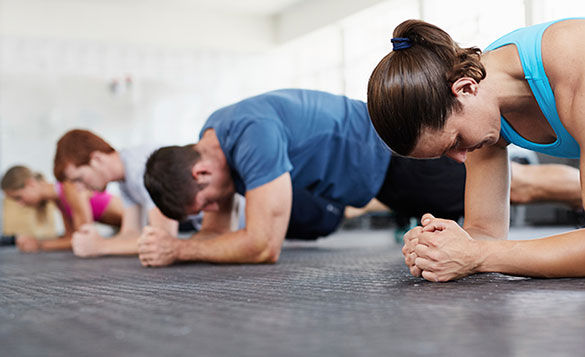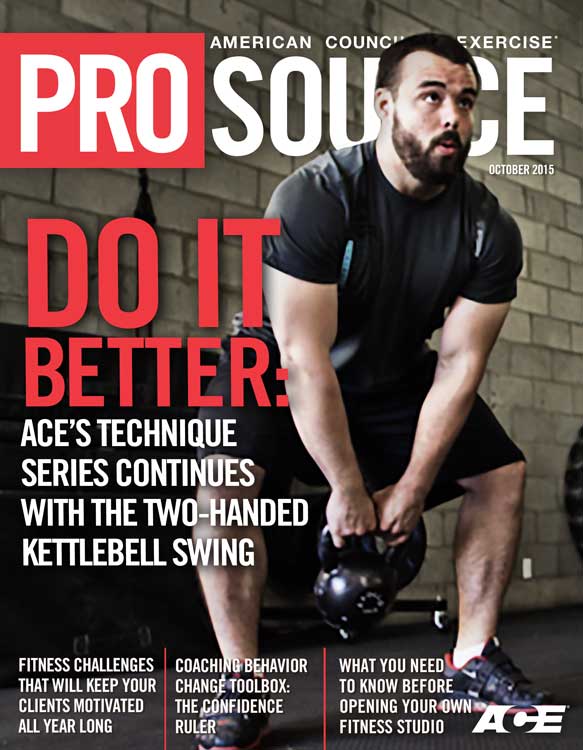
On a snowy Saturday afternoon in February, I walked into Essential Fitness, a one-on-one training studio in Farmingdale, N.Y. Co-owners Brian Mischke and Dan Gigante were bustling about the facility, arranging trap bars and weight plates and mats, in preparation for the surge of energy that was about to light up their gym on this dreary winter afternoon.
The wattage would be provided by six gym rats—me included. As I high-fived and fist-bumped Brian, Dan and the others who had arrived, I felt the same nervous sense of anticipation that I do on the starting line of a road race.
For once, I wasn’t in the gym to do a workout.
I was here to compete.
It was the 5th annual Winter Strength Competition, an unimaginatively named but unequivocally stimulating event undertaken each year by a group of local trainers and clients. Informal but competitive, the challenge has provided a focal point for many a winter training regimen—including mine.
“It’s a great goal to strive for,” says Mischke, who has the distinction of having both won two past challenges (when it was held at another gym) and organizing this year’s event. “It’s also another way to keep people working out and not falling off the exercise wagon. They know sooner or later they’re going to have to perform.”
Indeed, you couldn’t stroll in here after a month of hibernation and expect to do well in the movements on this year’s Challenge itinerary: deadlifts (using a percentage of your body weight determined by age and gender); followed by burpees and body-weight squats, AMRAP (as many rounds as possible), for one minute each; followed by the grand finale—a “plank-off,” in which everyone lined up along the gym floor and assumed the position for as long as possible.
The movements vary from year to year, and while the snow squall limited participation this year, we’ve had up to 15 people compete in this event. While it is a competition, it’s supportive; there’s a lot of cheering and encouragement for each person. We even had a few spectators: my trainer showed up to cheer me on, and a couple of members of Essential Fitness who heard about the Challenge wanted to see what it was all about.
The prize is modest—the winner doesn’t have to pay for the post-event dinner—but the honor, at least in the local gym circles, is great.
The Winter Strength Challenge, of course, is not the only such gym competition out there. Whether it’s the influence of CrossFit (where such internal challenges are a part of the culture), YouTube and social media (because some of these things are a lot of fun to watch), or simply the fitness public’s incessant demand for the fresh and new, in-gym competitions are becoming more popular with both clients and trainers.
“These kinds of challenges can help motivate and drive your clients,” says Ryan Stefan, owner of Fire Fitness and Conditioning in Bellevue, Wash. “Typically, a lot of that falls on your shoulders.” But your job as motivator-in-chief changes, he says, when the clients’ focus in on a challenge. “Now you’re like a musician who gives out energy to an audience and gets it back. It’s great for everybody.”

Speaking as a client—albeit one who takes his training seriously and has been doing so for years—I agree. The Winter Strength Challenge helps provide shape and focus to my training program during a desultory time of year. Knowing that I’ll have the Strength Challenge in February keeps me motivated through January.
This year, my training paid off, although others outperformed me in three of the events. My friend Jill, a super-fit little sparkplug, did 56 body-weight squats in one minute. Sue, a muscular, personal trainer deadlifted 114 pounds 76 times. And Tom, a 224-pound guy, managed to burn through an impressive 20 burpees in one minute.
Fine performances by all. However, I am happy to say that in the grand finale, I was the last man planking, out of six contestants. I held it for six minutes, 30 seconds.
I’m still bragging about that—and I’m already bugging my trainer about next year’s competition.
See what these kinds of challenges can do? Here are some tips on how to organize one that will get your clients’ competitive juices flowing:
Create a Challenge
The Winter Strength Challenge began five years ago in simple fashion: A group of five people lined up on the mat in a gym and took turns doing push-ups to failure, as a trainer kept count. A winner was declared (101 push-ups completed, if the memory of those there serves), and then the whole group went out to dinner together. Over the years, Mischke and others added movements and time limits to make it more interesting and to accommodate a larger group.
The fitness challenge you plan for your clients can be just as basic. Or you could get more complex and really creative, as Alison Heilig did when she turned a humdrum Tuesday night group fitness class into the hottest ticket in her gym. “We created a Team Challenge Tuesday and hyped it up,” says Heilig, a one-on-one trainer and running coach in Clarksburg, Md. “Every month we had a different thing.”

For each of the challenges, Heilig would break the class into teams (no more than seven). “The first thing I’d have each team do is come up with a name,” she says. “This is when they would get to meet each other and develop a little team chemistry. The names were hilarious and there was always some story behind them.”
That simple icebreaker helped forged an esprit de corps that would propel complete strangers to great lengths. Literally. In one memorable challenge, teams had to complete a seven-station circuit, including tire flips, push-ups and so forth, in 25 minutes. Everyone started together, and went at his or her own pace, stopping for breaks when needed.
For the last station, Heilig included what she calls an “equalizer”—a water balloon carry and toss. “If you haven’t done it, it’s harder than it sounds,” she says. Holding the balloons, participants would navigate an agility ladder and walk across a balance beam. Then, they’d have to toss their balloons into a 5-gallon painter’s bucket from about 10 to 15 feet away. “It didn’t matter how fast you were completing the circuit,” Heilig explains. “If you couldn’t get your heart rate down fast enough, you’d miss the bucket.”
Points were awarded for each balloon successfully tossed into the team’s bucket by its members. The team with the most points at the end of 25 minutes won the coveted ceramic-pig-with-the-mustache trophy (in keeping with the spirit of the event, Heilig awards the kitsch-iest, most outlandish trophy she can find).
Virtual Challenges Work, Too
Heilig had to create team spirit among strangers. When four members of a local high school’s competitive team signed up for one-on-one conditioning workouts over the summer, Mischke had the opposite problem.
How do you harness the competitive energy of four existing teammates training individually?
“All four train separately, twice a week,” Mischke says, “but we wanted to try and create some sense of competitiveness.”
Solution: Once a week, Mischke had the four boys (ages 14 to 16) perform an individual endurance challenge, such as a 25-meter all-out sprint on the Airdyne exercise bike or a 250-meter row. “It’s a max effort,” says Mischke. “And we dedicate one workout a week to that, for each of the boys.”
Faster than you can say “Millennial,” a new competition was created. “As soon as we’d finish with one guy, he’d be texting the other kids, posting a photo of his results on Instagram.” Mischke fanned the competitive flames by writing each of the boys’ weekly results on a dry erase board displayed in the gym. Also, because one of his other trainers works with two of the boys and he works with the other two, the sense of competition spread throughout Essential Fitness. “It even became a trainer contest,” he says with a laugh. “'My boys are kicking your boys’ butts.’”
Remember the Ultimate Goal
For varsity athletes engaged in off-season conditioning, stoking the competitive fires makes sense. That may not be the case with your average client. Regardless of the specifics of the challenges you design, remember that they are a means to an end—your client’s improved fitness and health. “It would really suck if I worked out with my trainer three times a week and he held a competition and I finished last,” says Harvard University psychologist Jeff Brown, Ph.D.
The key then is focusing on performance, not outcome. In that case, the attitude of the client might be different. “I might still be last,” says Brown, who is also co-author (with Liz Neporent), of the new book The Runner’s Brain, “but if my trainer and people around me are high-fiving me and saying ‘Good job!’ and I made measurable improvement over the last time I did this exercise, then I’m going to feel a whole lot better about that.”
Stefan’s facility is built around weekly challenges that include everything from a timed 150-meter shuttle run to a dumbbell farmer’s carry for distance, but members compete at different levels. He ticks off the distinctions: “You have the real competitive group, the ones who have to win, and are super motivated and in outstanding shape. You have the quasi-competitive who you motivate with ‘Hey, you did 50 push-ups last time, I want to see 52,’ so you take away the comparison to other people.”
Ultimately, the key is to create challenges that appeal to your clientele's sense of competition and camaraderie—or lack, thereof. Stefan explains how even non-competition-oriented clients can benefit from weekly challenges. “There are [clients] who are really averse to competition altogether. For them, it’s just about participating. We don’t even count their reps, we just want them to go through the movements. That itself is empowering.”





 by
by 




